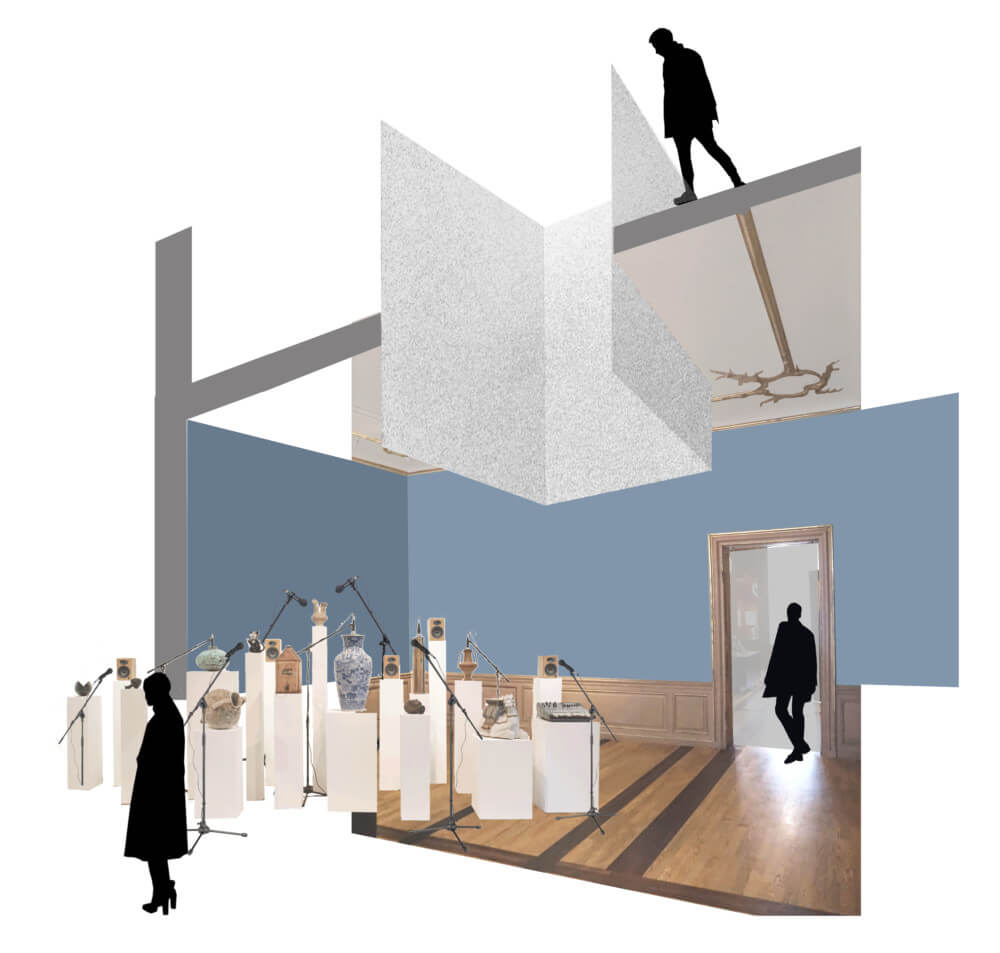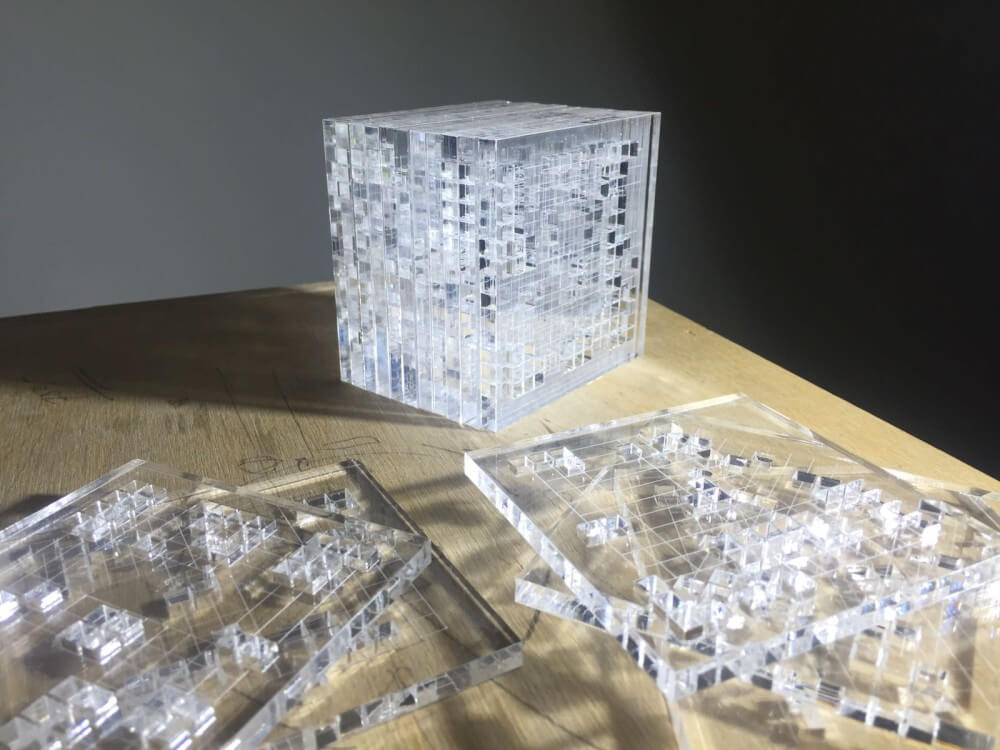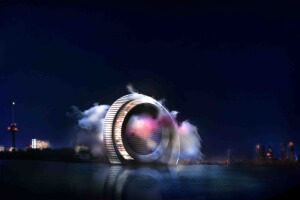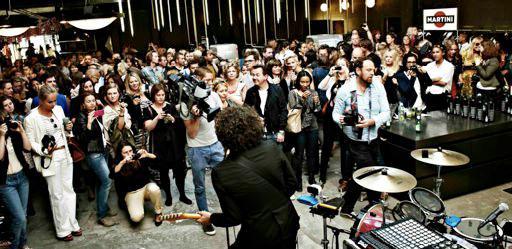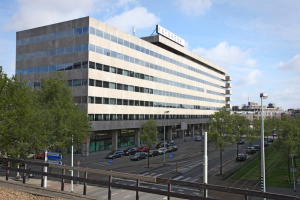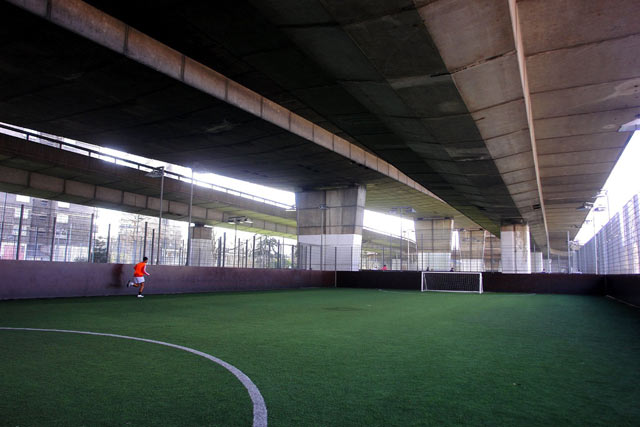Studio Museum Dedel
By Ira Koers (2020/2021)
During the second studio of the first semester, students worked on a different scale from the previous one. The assessment came from the request of the chairman of the museum Dedel in The Hague to investigate new possibilities within the space of the House and the functions of the museum. It is indeed currently exhibiting a huge collection of posters and advertisement art inside the magnifique space of the House in the past belonging to the Dedel’s family whose members were majors of the city for years. The House, years later, acquired different functions even becoming a bookshop. The treasures and multivalence of layers that space it’s still holding constituted the scenario students of Inside faced during the second part of the semester.
Insiders have been challenged to create new or different scenarios within the space of the House. Each student has been asked at the beginning to choose one place inside the House and to set the project around that only space. The task was quite broad; every boundary could have been investigated with the only restriction of keeping that space public.
Students questioned themselves and their design ideas whether and how to intervene in a space which is full of history; how to evaluate it; how to raise up attention and unreveal hidden features of that space. The result has been an interesting collection of projects, investigating the House from many different points of view.
Tutor of this Studio was Ira Koers https://www.irakoers.nl/
Presentation film Museum Dedel
Studio Het Ceramic Paleis
By MVRDV with Aser Giménez-Ortega and Elien Deceuninck (2019/2020)
How to deal with the transformation of an heritage space into a contemporary ceramics museum? How to treat the existing building, its history, its decoration, its multiple layers of domesticity etc?
That is what the first year students worked on within the studio ’Het Ceramic Paleis’. During this studio, students were asked to individually design and rethink the way Delft Blue Pottery, Asian, Islamic and modern ceramics is perceived and exposed within exhibition spaces, at the same time consider the spatial heritage that Het Paleis already had. The proposals and outcomes were various, for example some of the projects touched upon the historical aspects of Het Paleis, the lack of interaction within exhibition spaces, the value and tangibility of ceramics, bringing new technological and architectural interventions into Het Paleis.
The students were guided by Elien Deceuninck and Aser Giménez-Ortega of MVRDV. Here is a glimpse of all the projects! For more insights on these projects check Inside page on Instagram and Facebook.
Studio Goethe/AIR
By MVRDV with Aser Giménez-Ortega (2018/2019)
With her Artist-in-residence facility the Rotterdam Goethe Institute also offers German artists, theatre makers and architects a peek at the Dutch culture. Throughout the year a selection of German cultural researchers and makers stay at the Institutes guest appartment to observe the city, exchange experiences, cooperate with local makers and produce works of art.
You could type the Artist-in-residence facility as effective but not very homely, functional but not very inviting. It does what it is supposed to do but in doing that leaves many potentials unused. It’s interior is nondescript and its architecture does not fully use its spatial opportunities. The character of the spaces does not reveal its function or location. Also the space is in need of a renovation.
This is where the design assignment starts. In the second studio we are going to explore the potentials of the Artist-in-residence facility of the Rotterdam Goethe Institute. The bandwidth of the exploration will be defined by the director of the Dutch Goethe Institute Mikko Fritze and Claudia Curio who is responsible for the cultural programming of the Rotterdam Institute. They will sketch an image of possibilities and restrictions. Interventions in the space that do not touch the structural core of it are reasonably easy to realize. More structural interventions will make an intensive and lengthy trajectory through bureaucratic institutions necessary. Students, aware of these challenges, will, with their proposals, define their positions within the field of opportunities.
After presenting the results of the design exploration, The Goethe Institute together with INSIDE will determine the possibilities for further development of the proposals and the presentation of these. Depending on the usability of the proposals, new appointments are made at that moment.
Studio The School of the Future
By MVRDV with Mick van Gemert and Aser Giménez-Ortega (2017/2018)
Shifting demographics, rapidly developing technologies and ever changing visions on learning are constantly challenging education. Schools are subject of continuous transformation while buildings remain a static backdrop of generations to grow up. What would the school of the future be like? How can school buildings adapt to remain excellent facilities for future education?
This design studio will work with the hypothesis that the physical learning environment will remain relevant in the future and that today’s school buildings may – if affectively adopted – be the right place for future education. The studio will focus on the education of children between 4 and 11 years old and aims to apply new strategies, concepts and designs to a very concrete and local context; the HSV international primary school in The Hague.
Studio Let’s Decide
By MVRDV with Mick van Gemert and Aser Giménez-Ortega (2016/2017)

Photo by Ishka Michocka
Western society is recently challenged by more and more people that want to enter the public debate on current issues. Since all decision making starts with the ability to have a good conversation, students interior architecture at the Royal Academy of Art in The Hague, take on the challenge to develop decision spaces that suit the future demands of decision making. With their research and building prototype decision making installations the students enable participants to experience the extreme influence design of space and design of the debate itself has on the character of decision making.
Encouraged by the possibilities social media offers to share opinions, more and more people enter the public debate on current issues. These contributions to the debate that flood the internet are not always carefully formulated and claryfying in nature but regularly also show deeply felt frustrations by the participants in an uncensored way. This unleashed ambition to participate in decision making currently challenges the democratic traditions that especially western countries have developed. Because in the end all decision making at all scales starts with the ability to have a good conversation, students interior architecture at the Royal Academy of Art in The Hague, took on the challenge to develop decision spaces that suit the future demands of decision making.
The future interior architects at the Royal Academy of Art not only focus on designing physical space but engage fully with current social and cultural issues in society and use their position to shape the relation between the space that relates most directly to people and the world that surrounds that. With the project let’s decide they research the relationship between the design of space and the design of the debate on the process and character of decision making.
Studio Museumhotel EscherBreuer
by OMA with Mark Veldman, and Anne Hoogewoning (2016/2017)
The American Embassy in The Hague, designed by Marcel Breuer in 1956 and completed in 1959, is no longer viable for security reasons and will be decommissioned in the near future. The embassy building along Korte Voorhout will thus become available for redevelopment; an exceptional opportunity to celebrate this important icon at a prominent location in the city centre and research its possibilities for transformation. How can, with respect to its enigmatic character and in keeping with Breuer’s legacy, the building become part of the civic and cultural life of The Hague and be finally treasured by the public?
The news about the future vacancy of the embassy building stirred up several public debates in the last decade raising the question whether it should be preserved or demolished. Some have argued for demolition, a sentiment that seems to be dictated by the growing inaccessible and fortress character of the building. Currently the public opinion seems to support the preservation of this Brutalist design by Breuer; a showcase of his interest in construction and materials and their inherent expressive potential. Besides that, the building is one of the rare modernist examples of the symbolic projection of US diplomacy in Europe in the post war period.
One of the advocates of reuse of the building in an adapted form is the Gemeentemuseum Den Haag. The museum came up with a proposal to house their collection of the famous artist Maurits Cornelis Escher, currently located at the former winter palace nearby the embassy. The local government holds a corresponding view, though they also announced a desire to investigate the possibility of conversion of the building into a hotel. In addition to the Escher Collection the museum aims to show new art works (optical art) in an extension of the building and possibly some large scale art installations to evoke an intense spatial experience (e.g. James Turrell, Olafur Eliasson, Gregor Schneider) making optimal use of Breuer’s expressive architecture.
Studio Dutch Windwheel
by DOEPELSTRIJKERS with Eline Strijkers (2015/2016)
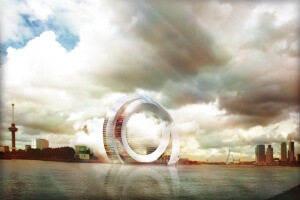
‘The predictive and adaptive environment’
Disruptive Building
Massive urbanisation, climate change and resource scarcity increasingly impact our way of life in cities and urban regions. Innovative solutions for potable water, renewable energy and sustainable food production are necessary to tackle these societal challenges in the decennia to come. The Dutch Windwheel is an inspiring concept that addresses these issues in an innovative way for an urban context. It is a distinctive architectural and touristic attraction that generates water, energy and food. The strength of the concept lies in the crossovers between cutting edge technologies, to establish truly disruptive change to the way we look at living with technology.
Predictive and adaptive environment
Building and environment form an ecosystem in which systems interact on different scales. Smart technologies enable the ecosystem to continually adapt and improve itself based on user patters and performance data. This interactive layer improves the efficiency of the building (energy consumption for example) but also the experience of users through 1:1 experiences and personalised information (narrow casting). Each student will be designated a particular user profile. Understanding the behavioural patterns and user needs will be explored by creating scenarios. The water, energy and food systems will form an integral part of the scenario development.
Studio Rethinking Retail
by DOEPELSTRIJKERS with Eline Strijkers (2014/2015)
Design project: The studio is looking for new typologies for the changing retail market. Relevant topics like vacancy, permanence vs flexibility, sustainability, spacial identitity , technology, experience will be discussed and used to come up with a design based on a new typology for a futureproof store anwered by actual themes for a case studie SPRMRKT in Amsterdam.
SPRMRKT is a 450m2 concept store located on Rozengracht 191–193, Amsterdam since 2003. The store houses a
broad selection of ready-to-wear collections designed for men and women, a bookshop and pop-up events. SPRMRKT
regularly hosts exciting art and lifestyle events.
Studio James Bond
by OMA, with Chris van Duijn and Mark Veldman (2014/2015)
Learning from Ken Adam
OMA design project – House for James Bond movie
Preamble:
The intention of the studio is to concentrate on design and design research, without performing extensive research on general subjects and site analyses. The theme of James Bond will generate immediately many associations and design ideas while still allowing for personal interpretation.
The location of the project inside the Academy facilities will make it easy for the students to study the design locations, while also being able to make or test installations on site.
Project description:
The design of a specific James Bond space, which can be used in one of the 23 movies. The project ideally ends with an edited version of the 007-movie where the original space was replaced by the new James Bond space!
Location:
Any space in the Academy building (or limited to the Inside Studio space).
Studio Reactivating Katshoek
by DOEPELSTRIJKERS with Eline Strijkers (2013/2014)
“How can The Katshoek Building in Rotterdam be Re-activated within its urban context through Integral Sustainability”
Studio Space will work this year with Doepel Strijkers and Basement Project Development on a real assigment where a sustainable social development of the building will be examinated and answered on district, building and product level. Students participate in in a Katshoek laboratory where research are done and models and mock-ups are made of design proposals for the building.
Talent Building / Building Talent
At five-minute walk from central station via the Schieblock and Mini-mall, Katshoek forms the next logical step in the development towards the Zomerhof district.
The building will give new talent the mental, physical and financial space to develop, with the maximum benefits of collective amenities.
But the project is not just about giving talent a helping hand. It is also about developing new talent. By connecting business, education and innovation in learning trajectories, the entire conversion will be implemented by people with a distance to the labour market.
Besides housing and developing talent, KATSHOEK, a monumental building in Rotterdam designed by Maaskant, will become a multifunctional building with a rooftop bar, ecological supermarket, grand cafe and short-stay hotel.
Studio SPORT
by Shift Architecture+Urbanism with Oana Rades (2012-2013)
Shift Architecture+Urbanism, Westway
Studio for Sport
Sport is sexy and it’s everywhere. It is connected with fashion, music, lifestyle, media, the street and the city. If sport was once the exclusive domain of clubs and associations, these days it is an indispensable part of our society and daily life.
Sport’s value for the community and the economy is getting major coverage in politics, the civil service and the media. Sport is good – good for your health, good for social cohesion, good for your image. Sport’s value for planning, however, is often largely overlooked. Sport can benefit the city and its public domain. It provides a counterbalance to the impoverishment of public space by charging this with activity and dynamic. Sport is one of the most powerful means to get people out of their protective home environment during their leisure time. It provides frameworks for encounter and interaction, two prerequisites for a vibrant public domain. In addition, qualitative sport facilities enhance a city’s attractiveness as a place for companies to settle and for those seeking a home.
High time then, that sport’s key place in society is reflected in the way it is designed, staged and integrated in the city. The question is one of what sport can mean for the city and, conversely, what the city can mean for sport.
The goal of this studio is to investigate where and how sport should be mobilized as a spur to urban quality. We will be looking for inventive spatial, programmatic and organizational solutions that enlist sport to enrich the public domain.
